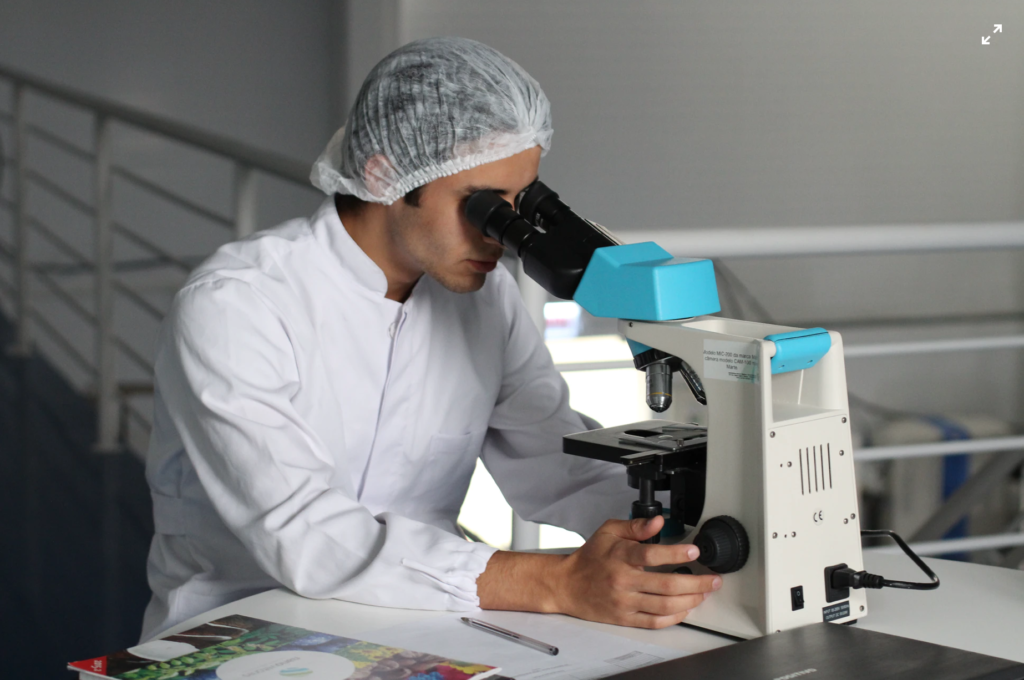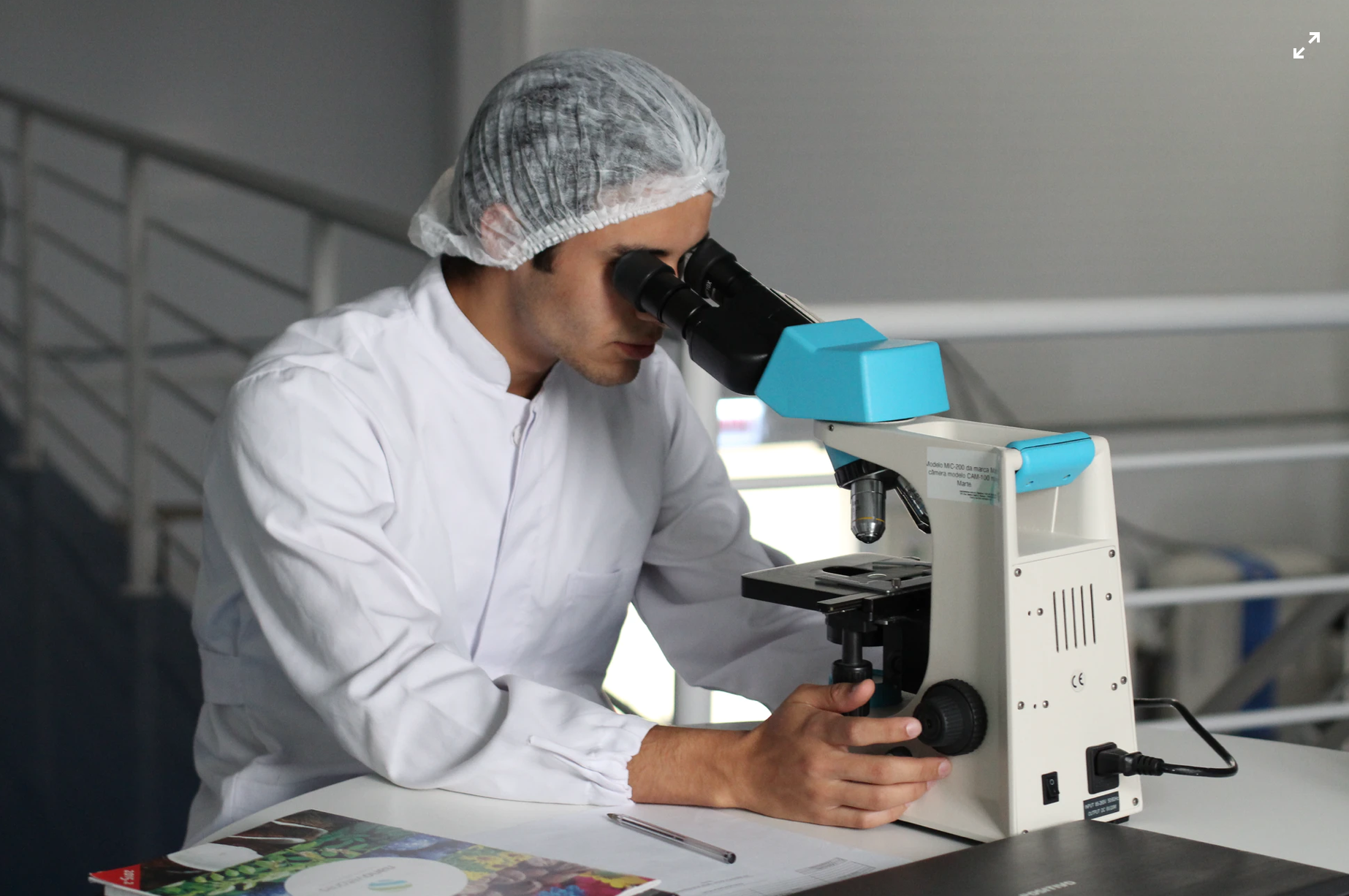Beginner’s Microscopy Q&A

Are you new to the world of microscopy or even new to the sciences? Fear not! Our Beginner’s Microscopy Guide below will answer all your questions.
What is the difference in a stereo and compound microscope?
The main difference between a compound microscope and a stereo microscope is what they’re used to observe. A compound microscope is generally used to view very small specimens or objects that you couldn’t normally see with the naked eye. A stereo microscope on the other hand is generally used to inspect larger objects such as small mechanical pieces, minerals, insects, and more. It should be noted that both stereo and compound microscopes are optical microscopes, which means that they use visible light. One of the main differences between stereo and compound microscopes is the fact that compound microscopes have much higher optical resolution with magnification ranging from about 40x to 1,000x. Stereo microscopes have lower optical resolution power where the magnification typically ranges between 6x and 55x. Because of this difference, stereo microscopes cannot be used for viewing very small details (microscopic) of small specimens.
What is the best microscope on the market?
This is probably this most common question in beginner’s microscopy. That’s a tough question to answer because it’s like asking “what’s the best car on the market?”
The answer is: it depends… Just as you may need a certain car depending on your profession, budget, or situation, you may need a certain microscope that works best for you. While we can’t objectively say what the best microscope is, we can help you determine some questions to ask yourself to guide you to the right decision. First, what is your profession or application? There are different types of microscopes for biologists, jewelers, art historians and more. As the question above addresses, do you need a stereo or compound microscope? Another question to ask is your budget. If you’re teaching young students, you may want something affordable yet durable. But if you’re doing specialty research, you may need just one ultra-specialized piece of equipment. If you’re not sure where to get started, contact a Nuhsbaum sales representative and we’d be happy to help!
How do I calculate microscope magnification?
Easy enough! To figure the total magnification of an image that you are viewing through the microscope is really quite simple. To get the total magnification take the power of the objective (4X, 10X, 40x) and multiply by the power of the eyepiece, usually 10X. More information can be found here if you’re looking for a deep dive into microscope magnification.
What is the difference between resolving power of an objective and resolution?
Resolution is the ability to distinguish two points as two points. One may need to compromise between resolving power and resolution to achieve the desired image. Remember, better resolving power is not always better in every situation. A compound microscope is generally used to view very small specimens or objects that you couldn’t normally see with the naked eye. A stereo microscope on the other hand is generally used to inspect larger objects such as small mechanical pieces, minerals, insects, and more.
Resolving power refers to the clarity with which an objective can clearly separate two points or lines lying close together. The shorter the distance between the points or lines, the greater the resolving power. Also the higher the N.A. (numerical aperture) number of the objective, the greater its resolving power.
What is a daylight blue filter?
This is a common question in beginner’s microscopy. In some applications, it is important to observe the true color of the specimen as best as possible. A “daylight blue” filter absorbs some of the yellow to red light from the typical halogen lamp, resulting in coloration much closer to natural daylight, which is more accurate and often time considered more comfortable to look at for long periods of time. In some applications, having the yellow halogen color provides better contrast. In others, daylight brings out the true color of the specimen.
Give us a call and we can help you with your decision on which microscope is best for your specific application and budget. We look forward to hearing from you!

